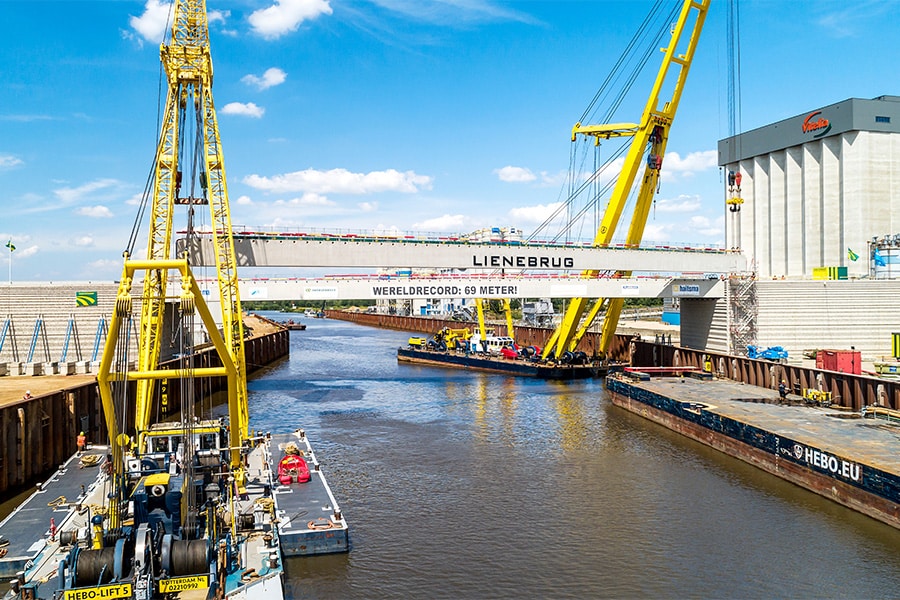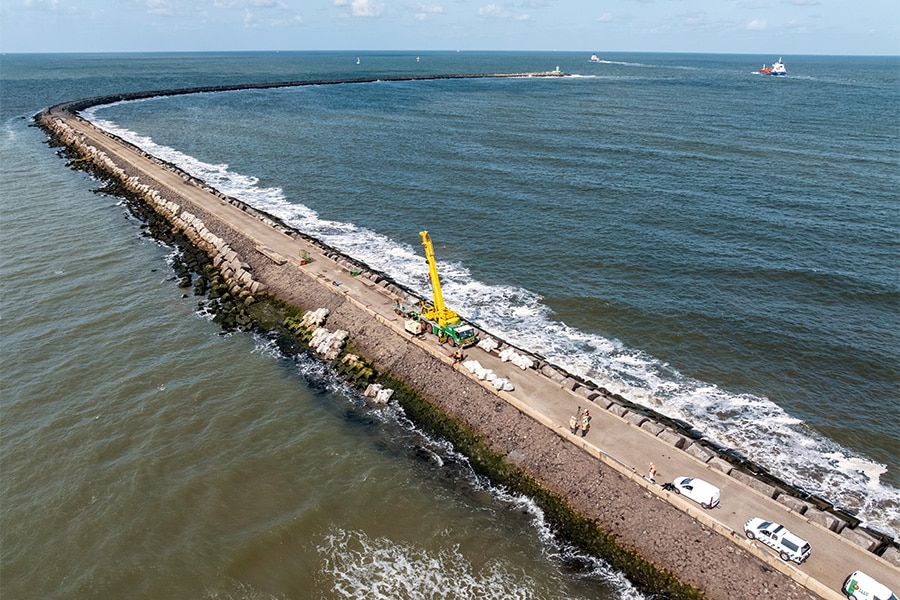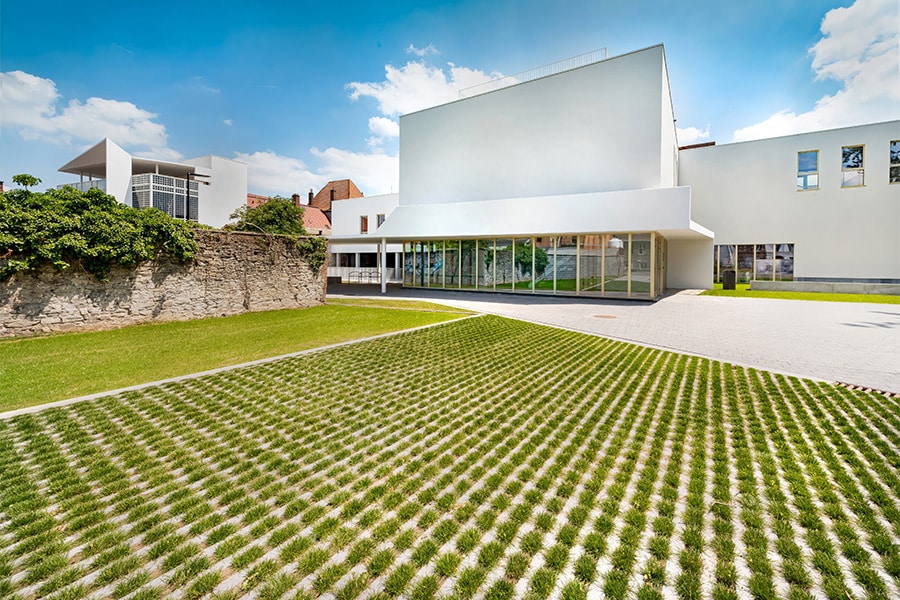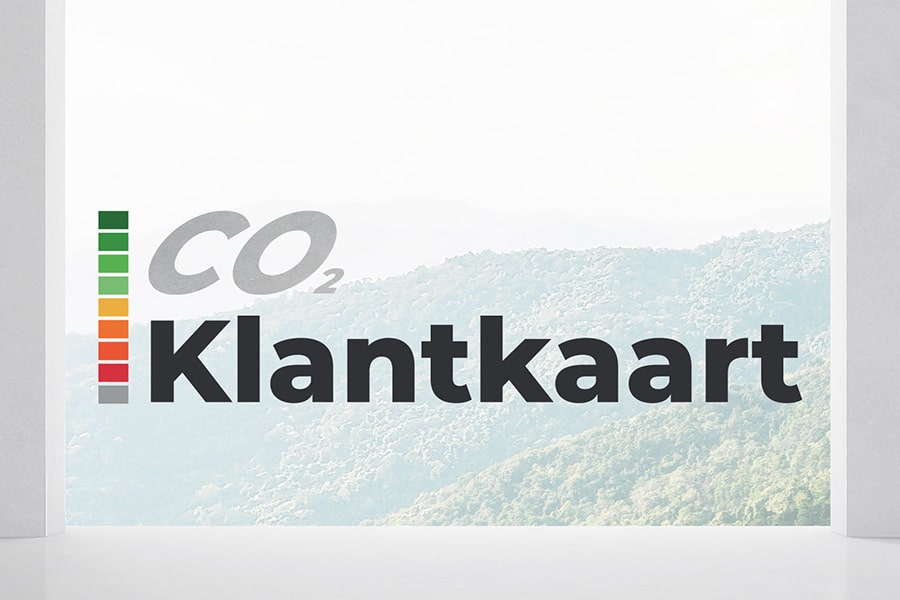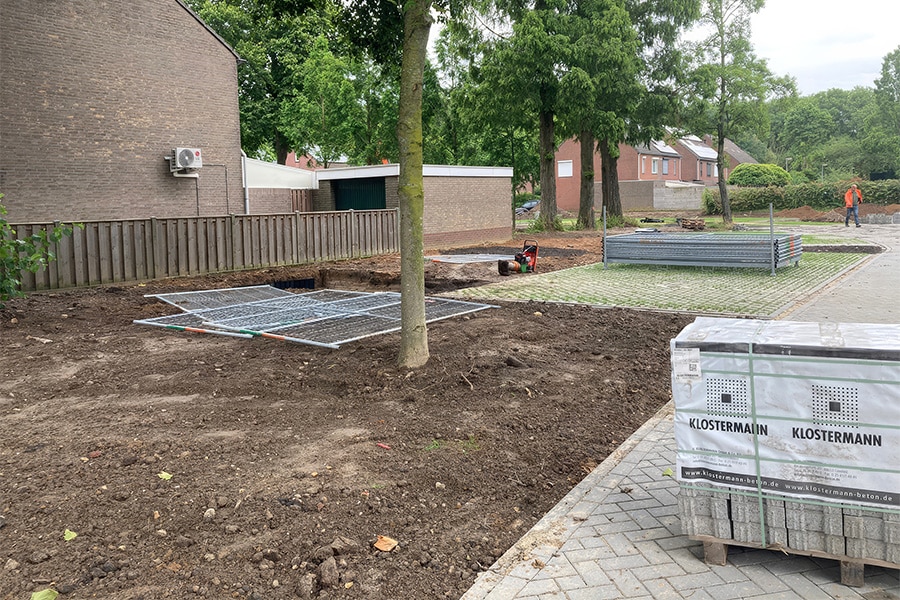
Innovative on many levels: living lab in Geleen
A special project in Geleen that is not only about the design of outdoor space, but also contributes to increasing social cohesion: the Evertsenplein. Renovated with neighborhood participation, the square and its nearby surroundings serve as a testing ground, testing various types of paving materials and smart lighting. Thanks to the municipality's broad approach, progress is being made on various issues, not only socially, but also in terms of sustainability and climate adaptation.
The Evertsenplein is an important square in the Zeehelden neighborhood in Geleen, a place where local residents meet. The square could use a facelift. Thanks to the new design, which is not only green but also climate-adaptive, the square is once again a pleasant place to be. Not only has the square been taken in hand, but parking spaces and an access road have also been redesigned. For the access road, new clinkers from Façade Beton have been used, of which 90 percent of the primary raw materials have been replaced by secondary raw materials. This results in a large sustainability gain. What is special about this project is that it serves as a testing ground. "In this project we can test various innovations," said Rob Rosenboom, Senior Project Leader for the municipality of Sittard-Geleen. With this, the municipality wants to prevent problems such as flooding from heavy showers, the result of climate change, in the future.
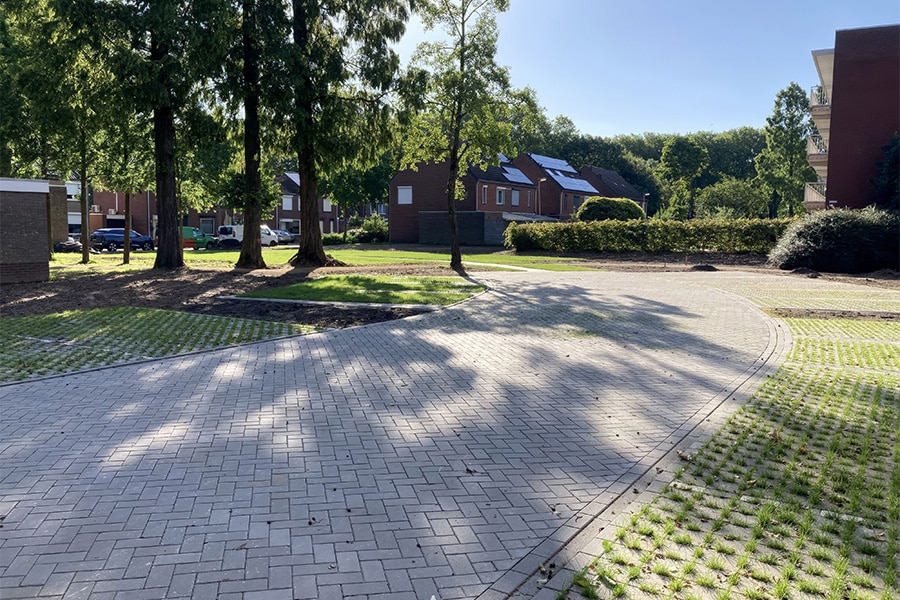
VR glasses
In order to make an impact on a social level as well, the neighborhood is involved in the project early on through "Doe Mee Cafés" organized by the municipality. In these Doe Mee Cafés, residents are given the opportunity to walk through the new design using VR glasses, as it were. "Three contractors had applied for this project, including BAM, which was the final preference," Rosenboom says. "This was due in part to the comprehensive plan they created, the measurement setup chosen and the lighting chosen that took flora and fauna into account."
Sample sections
The parking lot on Evertsen Street has been redesigned. A total of 32 parking bays have been created, with several test bays. "There are three types of parking bays," Rosenboom explained. "Parking spaces with 10 percent grass, spaces with 30 percent grass and spaces made entirely of grass. Fourteen parking spaces have been given a bottom of grass, the other spaces consist of grass concrete tiles and concrete pavers." Several measurements are taken at these parking bays. First of all, it is examined how often the spaces are used. The moisture content of the soil is also measured. Not only is the top layer, i.e. pavement or grass, varied, but the substrate is also tested. There are courses with a substrate of lava rock, and courses with a substrate of mixed granulate without a fine fraction. This will determine which subsoil allows the most rainwater to pass through. "With this, we are trying to reduce water flooding in the parking lot," says Dr. K. K., who is a member of the group.
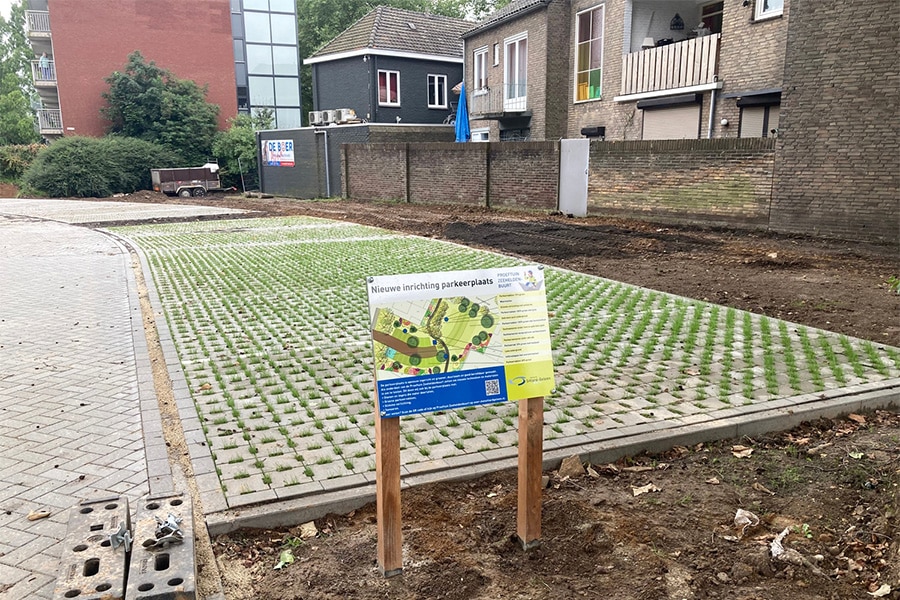
Test results
Although the project will only be evaluated after three years, there are already things that stand out. Rosenboom: "People prefer to park in bays with concrete pavers, or grass concrete, rather than bays with only grass. Of the spaces made entirely of grass, grass cassettes work better than event grass on fleece. Lava rock surfacing is more expensive, but is more effective than surfacing with mixed granules. Before we started landscaping, research was done on soil infiltration. We are on a clay layer, so the infiltration is not good. Therefore, an infiltration pile was installed that drains the water to a depth of 7 meters, to the gravel layer."
Valuable information
Smart lighting has been installed at the parking lot to enhance social safety in the neighborhood. "The lights are on at 100 percent until 11 p.m., and then are at 50 percent strength," Rosenboom said. "The color of the light changes to amber, because of the bats. When someone parks, the light switches to 100 percent intensity." A weather station is also installed at the parking lot, which tracks the wind, temperature, and also measures the amount of particulate matter. "All of this provides a fair amount of data, which was initially tracked by an outside party. In a while, the municipality will take that over." The project provides valuable information for the municipality, which can serve as a basis for the design of public spaces in other neighborhoods.
